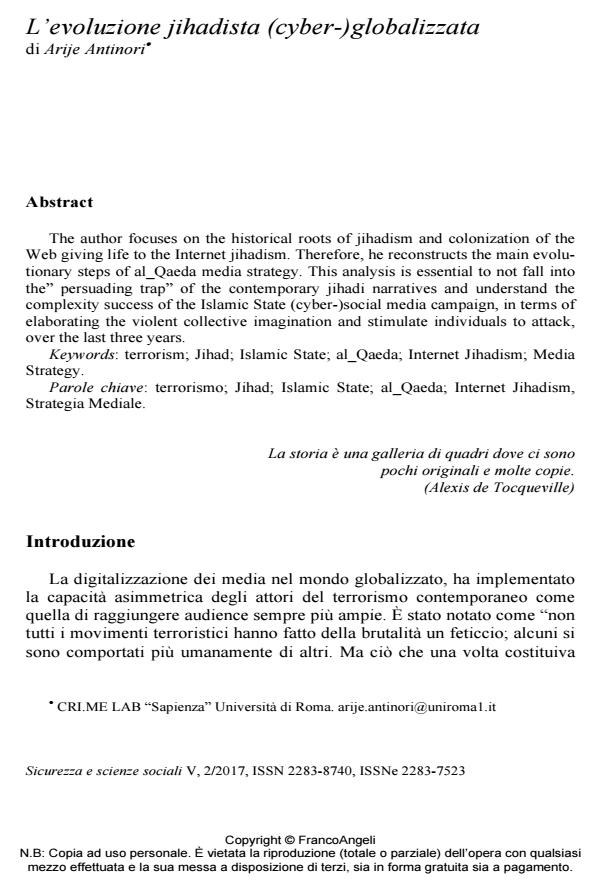L’evoluzione jihadista (cyber-)globalizzata
Titolo Rivista SICUREZZA E SCIENZE SOCIALI
Autori/Curatori Arije Antinori
Anno di pubblicazione 2017 Fascicolo 2017/2
Lingua Italiano Numero pagine 19 P. 33-51 Dimensione file 126 KB
DOI 10.3280/SISS2017-002004
Il DOI è il codice a barre della proprietà intellettuale: per saperne di più
clicca qui
Qui sotto puoi vedere in anteprima la prima pagina di questo articolo.
Se questo articolo ti interessa, lo puoi acquistare (e scaricare in formato pdf) seguendo le facili indicazioni per acquistare il download credit. Acquista Download Credits per scaricare questo Articolo in formato PDF

FrancoAngeli è membro della Publishers International Linking Association, Inc (PILA)associazione indipendente e non profit per facilitare (attraverso i servizi tecnologici implementati da CrossRef.org) l’accesso degli studiosi ai contenuti digitali nelle pubblicazioni professionali e scientifiche
The author focuses on the historical roots of jihadism and colonization of the Web giving life to the Internet jihadism. Therefore, he reconstructs the main evolu-tionary steps of al_Qaeda media strategy. This analysis is essential to not fall into the "persuading trap" of the contemporary jihadi narratives and understand the complexity success of the Islamic State (cyber-)social media campaign, in terms of elaborating the violent collective imagination and stimulate individuals to attack, over the last three years.
Parole chiave:Terrorismo; Jihad; Islamic State; al_Qaeda; Internet Jihadism, Strategia Mediale.
Arije Antinori, L’evoluzione jihadista (cyber-)globalizzata in "SICUREZZA E SCIENZE SOCIALI" 2/2017, pp 33-51, DOI: 10.3280/SISS2017-002004